Full Timetable
The evolving landscape in decommissioning.
Decommissioning Theatre
As the decommissioning industry in both on and offshore continues to grow, the rate of change is accelerating. Increasing pressure to address growing regulatory and reporting requirements is transforming decommissioning from successful delivery of on and offshore closures safely and on schedule, to delivering projects with maximum benefits and impact reporting, particularly with environmental and contamination, local communities and stakeholder engagement. It becomes increasingly vital to have a robust strategy in place to tackle the changing landscape. Liberty Industrial will take us through how some recent key learnings have been used to leverage and elevate decommissioning programs, particularly with regards to remote and international experience.
We will explore these learnings from recent case studies that have seen the benefits in applying innovation with technology, recycling, skill development and local engagement strategies.
CODA Partner Spotlights and Industry Perspectives
Decommissioning Theatre
See below for individual presentation information.
Decommissioning Waste and Circular Economy
Decommissioning Theatre
Circular Seed will delve into the complexities of managing waste from decommissioning assets, with a strong emphasis on the circular economy to reduce environmental impact. We'll present our pioneering resource recovery techniques, developed in-house and operational in Western Australia, focusing on the sustainable reuse and repurposing of materials. Our objective is to showcase the environmental benefits of adopting the reduce, reuse, and recycle mantra in decommissioning activities. By aligning these practices with global sustainability goals, Circular Seed aims to illustrate the vital role that decommissioning projects play in combating resource depletion and climate change, thereby fostering a more sustainable and resilient future.
The Gateway to Green Decommissioning – Uniting Regulatory Compliance with Socio-Economic Enhancement
Decommissioning Theatre
The geographical advantage of the Gascoyne Gateway Green Port Facility, located in Exmouth, presents a strategic value proposition in the realm of decommissioning offshore facilities. Located in close proximity to numerous offshore structures in need of decommissioning, the port facility will offer a pivotal base of operations for such activities. The accessibility of the port facility can significantly reduce transit times, ensuring cost-effective and efficient mobilisation of decommissioning assets. The Green Port Facility’s dedication to environmental sustainability provides a platform that decommissioning projects can support ecological considerations, minimising the environmental and carbon footprint, in recognition of the impact hydrocarbon industry during production. This facilitates a more sustainable end-of-life cycle for offshore facilities while bolstering regional economic growth through job creation and local industry engagement. The Gascoyne Gateway Green Port Facility emerges as a vital component in the responsible and resource-efficient dismantling of offshore infrastructure, aligning economic pursuits with environmental stewardship.
Towards Sustainable Oil Recovery: Innovations in Decommissioning Oil Rigs, Refineries, and Fuel Networks
Decommissioning Theatre
In the pursuit of safeguarding our environment, the Australian Government has recognised decommissioning as the paramount strategy to mitigate future environmental risks posed by oil and gas infrastructure. However, this process presents a formidable challenge, requiring solutions that transcend traditional methods.
Central to this challenge is the imperative to identify and implement 100% environmentally sustainable approaches. Mere relocation of environmental burdens or creating future liabilities is not acceptable. Instead, the focus is on fostering a circular economy model, where decommissioned assets are repurposed or recycled, minimising emissions and achieving zero landfill.
In this presentation, we delve into groundbreaking solutions that not only address the environmental risks associated with decommissioning but also pave the way for a more sustainable future in the oil and gas industry. From innovative technologies to holistic strategies, we explore avenues that lead to effective, responsible, and environmentally sound decommissioning practices.
CODA Partner Spotlights and Industry Perspectives 2
Decommissioning Theatre
See below for individual presentation information.
Navigating an oilfield minefield: managing the legal risks of decommissioning
Decommissioning Theatre
This presentation will explore some of the key regulatory landscape and associated legal risks faced by stakeholders in the Australian decommissioning sector. These include the nature and scope of the titleholder's primary responsibility, the implications of effecting the base case of total removal, and the problematic nature of deviations, the expansive scope of trailing liabilities and of "related person", the requisite financial assurance for the risk of marine oil pollution, and the operation of change of control provisions.
These measures are expected to positively influence the behaviour of stakeholders in a practical sense, to lead to greater awareness and to the promotion of standards that are suitable to Australian conditions, which differ from conditions encountered elsewhere. This can be achieved by active and ongoing engagement with stakeholders.
The presentation will also consider possible strategies for mitigation of risks in project execution, and the risk of disputes.
Challenges bring Opportunity: Shifting the Paradigm of Australia’s Decommissioning Sector
Decommissioning Theatre
Australia is relatively early in its oil and gas decommissioning journey however some things are clear, globally there is a significant increase in decommissioning activity. Competing regions, adjacent sectors, the availability of resource, and the relative remoteness of the Australian market all contribute towards the challenges the country faces in delivering decommissioning liability safely and efficiently.
We have a responsibility to shift the paradigm in Australia’s oil and gas decommissioning sector from a challenge to an opportunity and identify where we see the potential for demand to outstrip supply. Whether that be around supply, ways of working, contracting models or regulatory frameworks, it is incumbent on us to take what has worked well in more mature regions, and most importantly, what hasn’t worked well to shape Australia’s sector.
The industry can do this by recognising and leveraging global trends, and getting ahead of the curve through integration, outsourcing, single contracts and long term agreements, and much more. Whether driven by necessity from time pressure, a quick shift in regulatory policy, or a significant change in approach to late life and decommissioning, the operator and supply chain will need to push a new way of working for mutual benefit.
Well Abandonment Solution Utilising Bismuth and Thermite
Decommissioning Theatre
The bismuth alloy technology is capable of permanently and eternally shutting-off gas migration in single or multiple casing annuli by forming a V0 rated Metal-to-Metal gas tight seal. For P&A operations the bismuth alloy barrier technology results in a significantly higher level of sustainability compared to the current conventional way of performing P&A operations in oil and gas wells. This requires to be acknowledged in the vision for the future of P&A which will be one of the most emission intense oil and gas activities.
Join the well decomMISSION
Decommissioning Theatre
Well decommissioning has a progressive history in Australia - with activity levels exceeding global mature basins, and a pace of execution that eclipses many of the North Sea operations. However, the contracting approach and category management reflects conventional and conservative well construction procurement practices. Join the team to discuss the well decomMISSION, our sectors mission to create sustainable decommissioning that enable well slot reuse, repurposing to decarbonisation.
Official Opening
Future Energy Forum
Official Opening of AOG Energy by Hon Reece Whitby MLA, Minister for Energy; Environment; Climate Action, with keynote presentations by Danny Woodall, Director of Operations at Chevron Australia, and Liz Westcott, Executive Vice President Australian Operations at Woodside Energy.
A Welcome to Country on behalf of the Whadjuk people will be conducted by Barry McGuire, a Balladong Nyungar Man.
MC - John O'Hare, Executive Director, Department of Jobs, Tourism, Science and Innnovation
The Role of Natural Gas in the Energy Transition
Future Energy Forum
Natural gas plays a critical role powering Australian homes and industry as well as supporting energy security and economic prosperity for the Asia Pacific region more broadly. With Western Australia home to world-leading energy producers and innovative businesses that support them, this session will explore the role of natural gas in the energy transition, the world’s changing energy mix, and the potential impacts on the supply chain as countries and companies pursue net zero goals.
Chairperson:
Kathryn Sydney-Smith, Chevron Australia
JOGMEC’s approach to CCS projects
Future Energy Forum
JOGMEC aims to start an advanced CCS project in 2023 and to start CO2 injection by 2030. This presentation will introduce JOGMEC's initiatives for domestic and international CCS projects, including project development and R&D.
CCS: It Works, It’s Scalable – And There is No Net Zero Without It!
Future Energy Forum
Experts around the world agree that carbon capture and storage (CCS) is essential to lowering global emissions and achieving net zero targets. CCS is an essential technology to help decarbonise existing energy sources and reduce the emissions of hard-to-abate sectors. CCS also plays an important role in the production of low-carbon hydrogen.
According to the Global CCS Institute, carbon storage capacity is scaling. There are 196 commercial CCS facilities globally including 30 in operations, 11 in construction and 153 projects in development. Australia features prominently as home to the world’s largest, Chevron’s Gorgon CCS, which has stored more than 8 million tonnes of CO2 to date. Other Australian and regional projects are expected to become operational in the next few years.
Our panel, featuring leaders involved in CCS operations and at the forefront of technology development, will discuss the path towards meeting emissions targets, the pace, scale and investment required and the regulatory landscape necessary to support this evolving industry. They will also share perspectives on how CCS is maturing and insights on what’s ahead for this promising emissions reduction solution.
Chairperson:
Bernadette Cullinane, Deloitte
Basins and Projects – Decommissioning at Home and Abroad
Future Energy Forum
Join us for key project updates and an insightful exploration of decommissioning landscapes spanning from Australia to the North Sea and beyond. Hear directly from key industry players who will share their perspectives, experiences, and insights on the ongoing activities and future prospects.
Chairperson:
Francis Norman, Centre of Decommissioning Australia (CODA)
Showcasing Technologies and Solutions Enabling Lower Cost and More Efficient Operations of Producing Facilities
Knowledge Forum
Norway has a long history of innovation in the offshore energy sector and has been a testing ground for new and groundbreaking technologies for decades. This session will showcase specific solutions within smart operations that increase performance, reliability, reduce emissions and limit costs. This is an excellent opportunity to hear from Norwegian companies with key technologies, novel approaches and solutions.
Chairperson:
Tore Moe, NORWEP
Technical Presentations by the Australian Institute for Non-Destructive Testing (AINDT)
Knowledge Forum
Chairperson:
Richard Stocker, Enermech
Speakers:
Breaking Boundaries: Underwater Robotics and Advanced NDT - Stephan Freychet, TSC Subsea
Systematic process for tracking NDT/CM results through to repair or replacement - Nathan Lenane, Rio Tinto
Acoustic Emission Ensures Ammonia Tank Safety - Dr Gary Martin, ATTAR
How to leverage technologies to operationalise sustainability
Knowledge Forum
Presentations by Michael Wang and Paul Lee from IBM Australia
Achieving sustainability in asset-intensive operations involves a holistic approach encompassing energy efficiency, resource management and technological innovation. Firstly, optimising energy usage through the adoption of energy-efficient technologies and practices significantly reduces the environmental footprint of operations. Incorporating renewable energy sources, such as solar or wind power, reduces reliance on natural resources, enhancing long-term sustainability.
In addition, implementing condition-based and predictive maintenance technologies extend asset life, reduce downtime and ensure optimal asset performance. Visibility and tracking of sustainability and asset-condition metrics provide the decision support resources need for key asset repair, refurbish or replace decisions. This not only optimises resource consumption but promotes operational efficiency.
In this session, we will share how you can leverage technologies – to help capture key sustainability metrics that can drive changes in energy sources; and asset performance to achieve your sustainability goals across your operations.
With technology, sustainability is not only possible, but also achievable.
From Spark to Success: Nurturing Ideas into Robotic Solutions
Knowledge Forum
Over the past decade, Nexxis has pioneered groundbreaking robotics solutions that have transformed inspection capabilities across various sectors. Through this session, Nexxis aims to showcase the transformative potential of Australian innovation on a global scale, demonstrating how cutting-edge robotics solutions can redefine industry standards and drive progress across this diverse sector. Join us as we embark on a journey of exploration, innovation, and collaboration, unlocking new possibilities and shaping the future of robotics worldwide.
Offshore Wind 1
Subsea Forum
Chairperson:
Ashley Duncan, SEA / Technip
Speakers:
Avoiding Dragons: Engineering Insights for Australia's Wind & Wave Industry from 12+ GW of Global Experience - Terry Griffiths, Aurora Offshore Engineering
High Voltage Subsea Cable Landfalls - Lower Your Shore Crossing Risk - Thomas Seeber, Atteris Pty Ltd
Stabilizing subsea power cables - Hongwei An, UWA
The Importance of Integrating Mooring System and Power Cable Design to Enable Optimum Offshore Floating Wind Farm Designs - Alexander Rimmer, 2h Offshore Engineering Ltd
Offshore Wind 2
Subsea Forum
Chairperson:
Britta Bienen, SEA
Speakers:
Design and Noise Innovation for Offshore Wind Installation - Sarah Young, Subsea7
Sarens global experience in marshalling operations for offshore wind - Dirk Verwimp, Sarens
Meeting the environmental challenges of Offshore Wind in Australia. How are we tracking in 2024? - James Keating, Hydrobiology
Wave loads on monopile offshore wind turbines - Jana Orszaghova, UWA and Blue Economy Cooperative Research Centre
Offshore Wind 3
Subsea Forum
Chairperson:
Marius Martens, Worley Consulting
Speakers:
Ultra-High-Resolution Seismic Data: Revolutionizing Offshore Windfarm Planning Through Enhanced Geotechnical Insights - Andrew Long, PGS
De-Risking Pile Design and Installation in Strong Sediments - Juliano Nietiedt, UWA
Relations between Sand-Pile Interface and Offshore Wind Turbines Dynamic Behaviour - Amin Barari, RMIT University
Shared Mooring and Shared Anchor: Pathways to Reduce Capex for Offshore Floating Wind Farms - Nitin Repalle, Causal Dynamics Pty Ltd
CODA Partner Spotlights and Industry Perspectives 3
Decommissioning Theatre
See below for individual presentation information.
Case Study: How Reality Capture models are transforming the way operators prepare for decommissioning, with remote access to their offshore assets in high definition.
Decommissioning Theatre
The decommissioning process of a retired offshore asset demands tactical planning, coordination, and execution, akin to military precision, for guaranteed success. Accurate knowledge of the asset's current condition is critical when making informed decisions. If the intelligence of an asset proves incorrect during execution, the consequences for adapting the strategy on tasks such as decontamination, access point identification, structural load points, lift and cut instructions, can quickly escalate and lead to significant cost overruns.
To mitigate potential risks, many major operators have entrusted the services of Airscope for creating a Reality Capture photogrammetry model of aging assets. The dimensionally accurate Digital Twin model is easily accessible on Airscope's browser-based SaaS platform, 'Visualize™.' This platform facilitates ‘on-site’ remote access, empowering detailed work pack planning and provides technical confidence throughout all stages of decommissioning and removal.
Using satellite data to support decommissioning of energy assets.
Decommissioning Theatre
During the last 25 years, KSAT has consolidated solid and reliable experience in Earth Observation services, especially its Near-Real Time (NRT) Oil Spill and Vessel Detection services.
The KSAT Decommissioning service is targeting stakeholders from both contractors and regulators, and the use of satellite data is proven to provide the involved project team with an overview of the area before the activity starts, during the decommissioning activity and finally, area surveillance after completion.
Satellites are the most cost-efficient monitoring tool, compared with aircraft and vessels. The portfolio of satellites from KSAT is unique and currently we deliver surveillance reports for monitoring of oil spills, Methane, vessel detection, water quality in addition to onshore monitoring and mapping.
With industry partners, KSAT has developed technologies that improve safety in project execution and enhanced environmental monitoring for the offshore energy sector and the broader decommissioning industry.
Deep Dive into the Decommissioning Challenges including Mercury Removal
Decommissioning Theatre
Operational standards and environment requirements are steadily increasing to difficult-to-achieve levels. Limited space, housing and logistics further constrain produced water and decommissioning on space and personnel. Treating contaminants in offshore operations has varying inlet concentrations with increased challenges such as Mercury.
Next-Gen Decommissioning: Leveraging High Resolution Visual Reality for Efficient Operations
Decommissioning Theatre
This presentation will provide an overview of how 134 Megapixel photogrammetry benefits the decommissioning of assets by:
• Reducing operational costs
• Improving safety
• Reducing maintenance turnaround times
• Reducing greenhouse emissions
During the session, we will provide examples of our virtualplant product and how clients are using it to save time and money. We will discuss:
• Planning tools, material and resources required to do the job prior to getting there
• Reducing travel to site by being able to cost or quote on work by using virtualplant
• Visually inspecting site for safety hazards prior to attending
• Sharing information and cross collaboration with others not onsite
• Staff orientation and using virtualplant to plan safe access routes
• Using AI to determine corrosion detection
Innovation in Deconstruction & Recycling – Case studies
Decommissioning Theatre
Birdon, an Australian-based manufacturer and prime contractor, is renowned for its commitment to providing flexible and comprehensive solutions across maritime sector. Our focus on sustainability and longevity underscores our dedication to delivering end-to-end services tailored to the diverse needs of our clients.
In 2023, Birdon successfully completed three significant marine Deconstruction and Recycling projects, showcasing innovative solutions for the load-in and recycling of complex marine assets in Australia. These projects encompassed the salvage, deconstruction, and recycling of the Oberon-class submarine, ex-HMAS Otama, the docking and recycling of the MEFF Disconnectable Turret Mooring, and the deconstruction and recycling of the 10,000-tonne vessel ex-HMAS Sirius.
In this presentation we will share the invaluable insights gained from these projects and how these learnings can be leveraged for upcoming oil and gas decommissioning activities, highlighting the capabilities of the Australian industry.
CODA Partner Spotlights and Industry Perspectives 4
Decommissioning Theatre
See below for individual presentation information.
From Rig to Rig less P&A
Decommissioning Theatre
HydraWell is a global well Integrity specialist providing rig and rigless engineered solutions that optimise traditional Plug & Abandonment techniques. Inventor of the cup-based PWC® technology in 2008, today HydraWell utilise the second generation ‘jet-based’ PWC® technique to deliver a robust and efficient barrier placement operation at a lower cost in less time with a smaller environmental footprint. HydraWell’s proprietary PWC, Perf-Wash-Cement ® technology enables the energy transition by delivering reliable and sustainable zonal isolation services for plugging and abandoning Oil & Gas wells. Established in Stavanger, Norway with strategically located facilities in Aberdeen (UK) with a presence in Australia, Brazil and Malaysia, the experienced team of 35 employees is committed to developing the most advanced downhole solutions to increase efficiency, reduce operational costs and minimise environmental footprint.
Sustainability Below the Surface: Shaping Australia’s Offshore Industry Evolution
Decommissioning Theatre
In "Sustainability Below the Surface: Shaping Australia's Offshore Industry Evolution," we delve into the transformative impact of our subsea chop saw technology and pipe coating removal system. Focused on environmental responsibility, we discuss how these innovations streamline decommissioning processes while significantly reducing carbon footprints. Our subsea chopsaw ensures clean and rapid cuts, maximising the usability of decommissioned pipes. Paired with our advanced pipe coating removal system, we address the often-overlooked aspect of repurposing materials. This meticulous process leaves pipes in a pristine state suitable for reuse. We showcase how this integrated technology exceeds industry expectations, epitomising the marriage of technological innovation and environmental stewardship. Join us to explore the complexities of subsea sustainability, highlighting cleaner, faster cuts and an immaculate coating removal finish, setting a new standard for environmentally conscious decommissioning practices.
Lightening the P&A Load – Wellhead loading for old weak wells
Decommissioning Theatre
As the amount of well decommissioning in Australia ramps up, the industry will be increasingly facing the challenge of connecting to old weak wellheads. This problem is partly age related, due to accumulated fatigue, corrosion and other related factors, but is exacerbated by the larger, heavier BOP stacks of modern rigs. Other challenges include: unsocketed wellheads, and lack of detail on the wellhead design such as weld data. This presentation explores some of the options available to the industry in addressing this challenge, looking at more accepted options such as tethering, but also alternatives such as an ALARP approach to safety factors used in loading analysis, lightweight BOPs, and opportunities for maximising open water operations.
Forward Work Plans presented by Woodside Energy
Forward Work Plans
Join Woodside Energy as they share an update on their upcoming procurement schedule and potential contracting opportunities. This presentation is exclusive to AOG Energy.
Forward Work Plans presented by Chevron Australia
Forward Work Plans
Join Chevron Australia as they share an update on their upcoming procurement schedule and potential contracting opportunities. This presentation is exclusive to AOG Energy.
Strategic Industrial Areas and their crossover with Wind Energy
Future Energy Forum
Presentation by Rebecca Brown, Director General, Department of Jobs, Tourism, Science and Innovation.
Chairperson:
Linda Dawson, Department of Jobs, Tourism, Science and Innovation
Winds of Change
Future Energy Forum
Join Andy Evans, the renowned offshore wind pioneer, futurist, filmmaker, and industry leader in Australian waters, as he guides us through the captivating journey of Western Australia's dynamic wind energy landscape.
From the initial triumphs of onshore wind projects to the boundless horizons of offshore wind and manufacturing possibilities, Andy Evans leads an exhilarating exploration of wind's transformative role in Western Australia's energy transition.
As the mastermind behind the acclaimed film Planet Wind, Andy Evans intertwines cinematic storytelling with the State's pivotal moments in wind energy. He lays out a visionary path and casts a vision for WA’s renewable and wind-powered future.
Wind’s Role in the Energy Transition
Future Energy Forum
We are delighted to introduce an esteemed lineup of speakers, each bringing a wealth of experience and invaluable insights to the forefront of wind energy in Western Australia.
The panel brings together a wealth of expertise spanning the realms of international renewable energy, pioneering development initiatives, groundbreaking innovation within the energy sector, critical infrastructure deployment, and a deep reservoir of experience in wind energy and transmission.
These visionaries will foster dynamic discussions, shedding radiant light on the future of wind energy in Western Australia and on the global stage.
Chairperson: Mads Prange Kristiansen, Trade Council of Denmark
Onshore Experiences and Supply Chain Opportunities in WA Wind Energy
Future Energy Forum
Energising Wind – Unveiling Supply Chain Opportunities and Regional Strengths
As we stand at the crossroads of a renewable revolution in wind energy, this session highlights lessons from case studies that illuminate the evolution of supply chains and innovative manufacturing techniques.
Discover how Western Australia can harness its unique regional strengths and diverse workforce in the wind energy sector. By blending global insights with local expertise, we can drive unprecedented advancements in manufacturing and forge a robust, sustainable supply chain for wind energy.
Panel moderator/Chair: Linda Dawson, Department of Jobs, Tourism, Science and Innovation
Collaborative Policy Making and Regulation for Western Australia’s Wind Energy Future
Future Energy Forum
In this session we navigate collaborative policymaking and regulation, steering Western Australia towards a wind-powered future.
Western Australia, with its abundant wind resources and unwavering commitment to renewables, is poised to play a pivotal role in shaping the global transition to wind energy. However, the path to harnessing this potential is paved with the complexities of policy formulation and regulatory frameworks.
Chairperson: Linda Dawson, Department of Jobs, Tourism, Science and Innovation
Future Offshore Opportunities for the Wind Energy Supply Chain
Future Energy Forum
This session provides a perspective on the global narrative of offshore wind. It draws from international case studies that illuminate the evolution of supply chains and pioneering manufacturing techniques.
Explore how Western Australia can harness its distinctive regional strengths and diverse workforce, blending global insights with local expertise to chart a course towards unprecedented manufacturing progress and the construction of a resilient offshore wind supply chain.
Chairperson:
Damon Sunderland, ARUP
Natural Hydrogen – A Great White Hope? [Curated by Society of Petroleum Engineers]
Knowledge Forum
It is a truth that is universally acknowledged, that a hydrogen industry is likely to be a major contributor to reducing emissions and reaching our decarbonisation goals. What is less familiar is that some of that hydrogen could come from natural sources rather than manufactured via water or hydrocarbons. Three different perspectives will be shared in a one hour panel session to discuss what the chase for this new gold (hydrogen) means for researchers, regulators and industry. Share in the thrill of the exploration chase of this potential addition to the low emissions toolkit.
Chairperson:
Linda Stalker, CSIRO
Offshore Oil and Gas Infrastructure Reuse for CCS: Opportunities and Challenges [Curated by Society of Petroleum Engineers]
Knowledge Forum
Repurposing offshore infrastructure for CCS is a vital route to sustainable carbon reduction in our changing energy landscape.
Join us for a one-hour session featuring three expert speakers who will share insights, case studies, and the latest developments in adapting offshore oil and gas facilities for CCS, exploring opportunities and challenges in converting existing pipelines, platforms, wellbores, and depleted reservoirs for carbon storage while delving into the technical, regulatory, and environmental dimensions of this crucial effort.
Whether you're an experienced CCS professional or new to the field, this session will enhance your understanding of the evolving CCS landscape.
Chairperson:
Jeff Zhang, Wood
AI Drives Transformation of Oil and Gas Industry [Curated by Society of Petroleum Engineers]
Knowledge Forum
CO2 Plume Mapping and Prediction of Secure Storage with Machine Learning
Artificial intelligence (AI) and machine learning (ML) are transforming our lives in ways that were once unimaginable. From healthcare to finance, AI and ML are being used to solve complex problems, improve efficiency, and drive innovation.
In the energy industry, AI and ML are playing a pivotal role in driving the transition towards a more sustainable future. By leveraging these technologies, the industry is becoming more efficient, safer, and greener.
In this session, we will explore how AI and ML are being used in our industry to solve complex problems, increase efficiency in carbon capture and storage, and create safer workplaces.
Chairperson:
Hossein Karami, SLB
‘Bridging the Knowledge Gap’ in Energy [Curated by Society of Petroleum Engineers]
Knowledge Forum
In recent years, the energy industry has faced human resourcing challenges. As the generation who have evolved with the local industry reaches retirement, the interest in joining the industry amongst the younger generation is dwindling.
The objective of this session is to explore the knowledge gap in the energy industry, at present and in the future, including the challenges and potential solutions. We will examine this topic critically across generational groups in the industry via presentation and a facilitated panel discussion with industry leaders. There is no time like the present to explore this topic critically and to share perspectives on how to bridge it - mind the gap!
Co-Chairs:
Orla McSharry, NOPSEMA & Demi Migliore, Woodside Energy
Keynote Presentation: Chevron Australia – Incorporating Digital and Agile within Chevron’s Factory Model
Subsea Forum
Stuart will provide an update on Chevron Australia’s factory model approach to future subsea tiebacks, and outline how digital and agile methodologies are being incorporated to optimise capital project performance.
Chairperson:
Julie Morgan, SUT/Woodside
Speaker:
Stuart Payne, Chevron
Digital Twins, Data Acquisition, AI
Subsea Forum
Chairperson:
Julie Morgan, SUT/Woodside
Speakers:
Digital Twin Concept for Subsea Pipeline life extension - Nitin Repalle, Causal Dynamics Pty Ltd
An underwater robotics milestone: commissioning & start-up of UID operations at Njord - Francesco Cavallini, Saipem
Using Real Time Data to Clean the Lake - Robert Manning, SORR and Marc Dimmick, NCS
Making Sense of Measurement, Monitoring and Verification Techniques for Offshore CCS Sites - Stephen Auld, Sonardyne International Ltd
Panel Discussion: Does Green Need Blue
Subsea Forum
Join us for an engaging panel session where we will explore the critical intersection between the Green and Blue Economies.
As the world moves towards a low-carbon, socially inclusive, and resource-efficient future, invited experts will debate if it's possible to transition to a sustainable “green” economy without harnessing the immense potential of the Blue Economy, which the World Bank defines as the sustainable use of ocean resources for economic growth, improved livelihoods, jobs, and ocean ecosystem health.
The panelists will discuss the various sectors of the Blue Economy, including renewable energy, biotechnology, shipping, fishing, tourism, waste management, and more. With a particular focus on the extraction and use of marine non-living resources, the utilization of renewable non-exhaustible natural forces, and indirect contributions to economic activities and environments, the discussions will highlight the need for global cooperation and innovation to balance the needs of different sectors and stakeholders.
As our world faces unprecedented environmental and socio-economic challenges, this panel session offers participants valuable insights and an opportunity to engage in a crucial dialogue about how the Green and Blue Economies can jointly contribute to sustainable development and a better future for all.
Come along and be part of this conversation, as we unearth innovative strategies and collaborative approaches to facilitate the harmonious co-existence and growth of both the Green and Blue Economies.
Chairperson:
Neil Gordon, Global Underwater Hub
Late Life Planning and Decommissioning
Subsea Forum
Chairperson:
Bukkie Orugun, SUT /Technip
Panellists:
Deep Dive Recovery - Lessons Learned in Decommissioning - Emilien Rulence, Atteris
Leveraging Artificial Intelligence in the Decommissioning of Subsea Assets - Jake Stride, rahd
Case Study of Decommissioning Assets not designed for fatigue loads - Vandana Crispin, Oceaneering
From Concept Through to Decommissioning and Beyond, Using Digital Twins to Expand Traditional and New Energy Horizons - Andrew Tran, FutureOn
Diversity and Inclusion Breakfast
What's My Age Again? Cultivating a Future without Bias.
This year the annual Diversity & Inclusion Breakfast will be a dynamic morning of networking, engaging panel discussions, a delicious breakfast, and actionable steps to foster a future workplace without age bias. Bring your colleagues and be part of this thought-provoking event.
CODA Partner Spotlights and Industry Perspectives 5
Decommissioning Theatre
See below for individual presentation information.
Optimising Riser-less Well Abandonment: Best practices and Cutting Edge Technologies in Vessel Based Approaches
Decommissioning Theatre
The North Sea decommissioning domain is dynamic, and our vessel-based team has extensive expertise in this field. Our success is rooted in pioneering abrasive cutting technology and the innovative SEABASS system. SEABASS is a single-trip straddle system that provides next-generation riser-less well decommissioning. It perforates single or multiple casing strings, creates a circulating path for contaminant removal, and places environmentally sound cement plugs. This streamlines operations, enhances safety, and mitigates risks. Our strategic focus includes collaborative partnerships with vessel providers, operators, and third parties, coupled with mobilization efficiencies driven by experience, simulation testing, and adaptation. We excel in interpreting well data, anticipating unforeseen challenges, and optimizing operational scopes to de-risk complex projects. The accolade of the “Decom-Mission Award for Innovation” at the 2023 annual awards underscores the system’s groundbreaking impact.
Transforming obstacles to assets: positive stakeholder engagement in decommissioning decision making
Decommissioning Theatre
Positive engagement of stakeholders is not only required by decommissioning regulation, but also is critical in avoiding PR and reputational disasters downstream. Stakeholder engagement often occurs as a ‘necessary evil’ to be executed to tick boxes, but the leading thinkers in oil and gas decommissioning are seeing the huge opportunity of turning stakeholder engagement into an asset in support of the decision process. Positive stakeholder engagement starts right in the design of the decommissioning decision process – by creating a collaborative approach to decision making built on best-practice decision science. Paul will share his 20 years' experience designing and facilitating collaborative, multi-stakeholder decision processes with high levels of stakeholder participation and speak first-hand to real world examples from decommissioning decision making. Paul will draw out some key, fundamental principles which make the difference.
Developing WA’s Value-Adding Critical Minerals Industries
Future Energy Forum
Hear from representatives from industry, government and peak bodies on opportunities and challenges in developing WA’s value-adding battery and critical minerals industries to contribute to global decarbonisation goals.
Chairperson:
Shannon O'Rourke, Future Battery Industries CRC
Attracting, Training and Retaining Talent for the Energy Transition
Future Energy Forum
In the ever-evolving landscape of the energy sector, the need for skilled professionals to adapt to new industries and technologies is paramount. Hear from a diverse range of speakers discussing the challenges and opportunities presented by developing and retaining a skilled workforce to transition industry to a new energy future, whilst sustaining the traditional industries that underpin the current energy sector.
Chairperson:
Michelle Hoad, North Metro TAFE
Safeguard Mechanism, Sustainability & Carbon Accounting and Getting to Net Zero
Future Energy Forum
Join us for a dynamic panel session starting with an overview of the Safeguard Mechanism and Australia's Carbon Exchange. Industry experts will then discuss different strategies that organisations could consider, who should be involved and and how to drive interest into action.
This enlightening discussion will provide professionals and the public alike with actionable insights to make more sustainable choices that resonate through their value chains. Don't miss this chance to hear from regulators and industry experts on a key topic facing the Australian Energy Industry.
Chairperson: Jeremy Campbell-Wray, Baker Hughes
The Role of Renewable Hydrogen in the Energy Transition
Future Energy Forum
Hear from government and industry leaders on the role that hydrogen is set to play in the global energy transition.
Chairperson:
Katie Cook, Department of Jobs, Tourism, Science and Innovation
Future Leaders panel discussion and Official Close of AOG Energy
Future Energy Forum
Join us for a dynamic next generation focused panel with young leaders discussing their experiences and insights in the energy industry, and how as emerging leaders they equip themselves to build resilience and adaptability in an exciting ever-changing industry. This session will inspire the next generation to understand how they too can make a meaningful contribution to society and their industry.
AOG Energy 2024 will be officially closed by Rebecca Brown representing the Western Australian State Government.
Green Shipping [Curated by Royal Institution of Naval Architects]
Knowledge Forum
Chairperson:
Jim Black
A technical, economic, and environmental assessment of clean marine fuel options for Australia - Nguyen Cao
Pertamina's Eco-Friendly Innovation: Producing Environmentally Friendly Ship's Fuel in Plaju Refinery (Marine Fuel Oil Low Sulphur) - Daniswara Krisna Prabatha
Autonomous Systems [Curated by Royal Institution of Naval Architects]
Knowledge Forum
Chairperson:
Mark Roberts, Kongsberg Maritime
A Fremantle Built 12m USV with Optimal Characteristics for HIPP Hydrographic Work in Australia: Challenges, Design Considerations and Progress Update - Charles Collins
Taking the Drone Revolution Underwater for Offshore Energy - Peter Roberts
Inspecting deepwater live assets by means of Underwater Inspection Drone - Giovanni Massari
Offshore Operations [Curated by Royal Institution of Naval Architects]
Knowledge Forum
Chairperson:
Dr Tim Gourlay, Perth Hydro
The Fruition of a Deepwater Gen3 FPSO - Jinzhu Xia
Case study – Flange face corrosion in the upstream oil and gas sector - Dene Halkyard
Advancing Indonesia’s Oldest Refinery Data Management: Implementing Multi-layered Digitalization as Strategic Platforms for Real-time Business Monitoring & Decision-making - Dimas Priyambodo
Benchmarking of Oil Custody Transfer Operations at Two Offshore Terminals and Jetties - Bassey Bassey
Keynote presentation: Approaches to Underwater Cultural Heritage Identification and Management
Subsea Forum
Chairperson:
Iain Wylie
Keynote Speaker:
Andrew Graham, Woodside Energy
Pipeline Innovation and Technology 1
Subsea Forum
Chairperson:
Iain Wylie, SUT / Oceaneering
Speakers:
Dual NDT Methods for the Inspection of Complex Anode Attachment Welds in Subsea Risers Coated with Thermally Sprayed Aluminium (TSA) - Stephan Freychet, TSC Subsea
Flexible Riser Annulus Vent Port Integrity and Inspection - Gilles Gardner, The Impulse Group
Rockin' Without a Cushion - Craig Booth, Atteris Pty Ltd
Utilising Innovative Techniques to Return Vibrating Subsea Rigid Pipe Production Spools to Service - Mark Casey, Santos
Pipeline Innovation and Technology 2
Subsea Forum
Chairperson:
Mark Casey, Santos
Speakers:
Development and application of integrated process module (IPM) for subsea operations - Darren Hatton, Baker Hughes
A qualified solution for subsea repair of CRA pipelines: the GMSC connector - Francesco Cavallini, Saipem
Pre-commissioning approaches for offshore CO2 pipelines - Andrew Ripley, Subsea7
Repurposing submarine pipelines for CO2 transportation - Emilien Rulence, Atteris
Island Power - Enabling Umbilical-less Subsea Development, Si Yeaw, OneSubsea








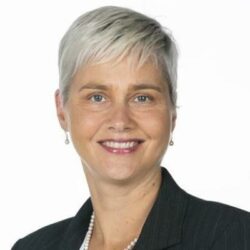







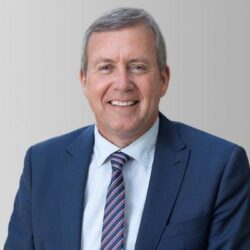


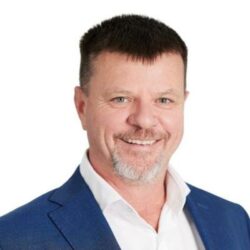

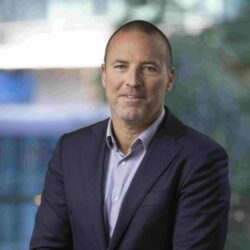

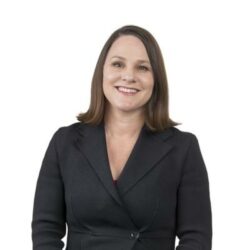


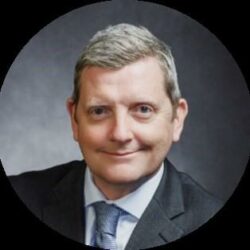

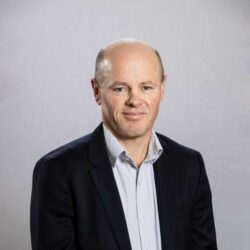
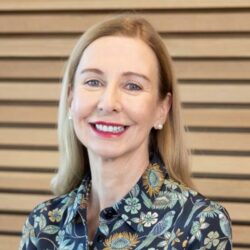
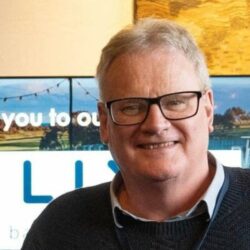

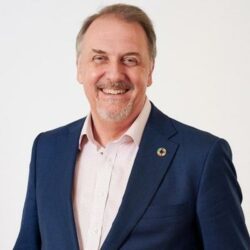
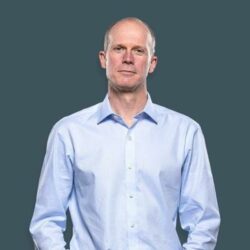
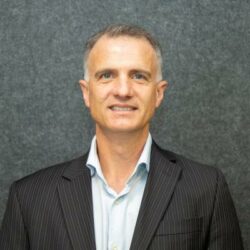
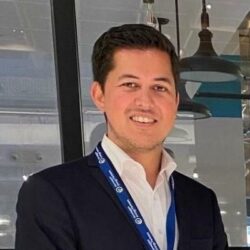



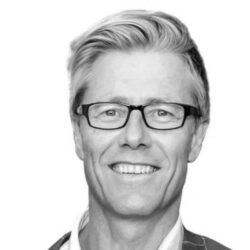
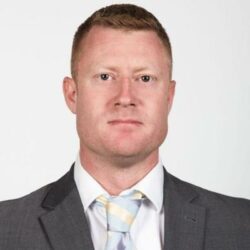
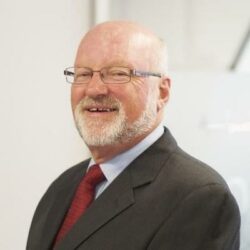
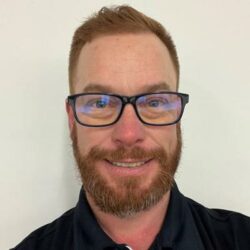
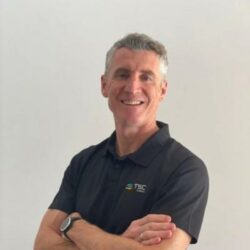
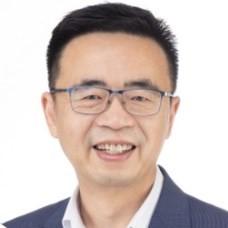
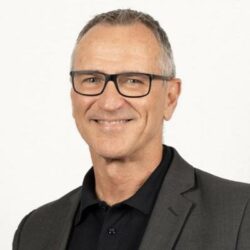
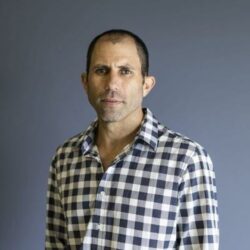

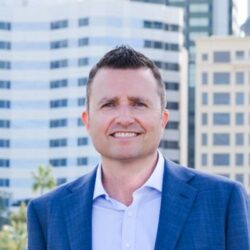

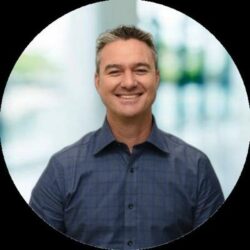




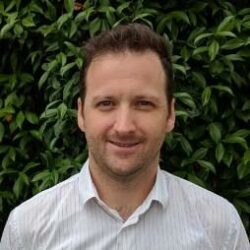





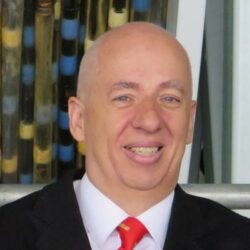






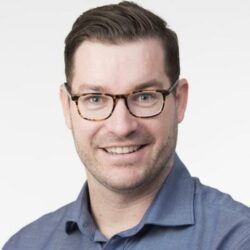



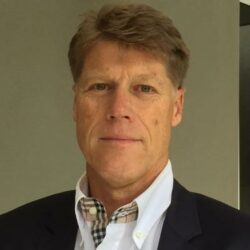
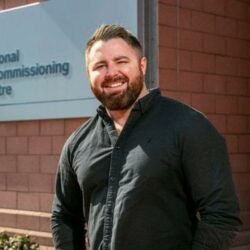

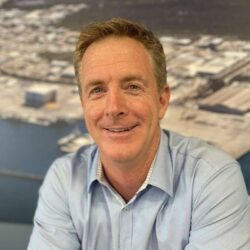
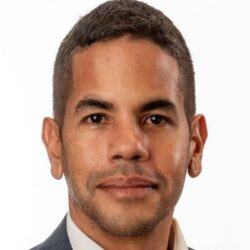


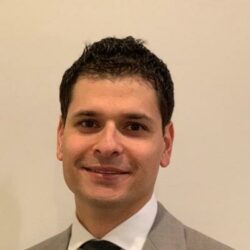


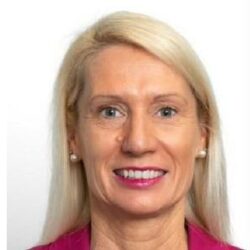



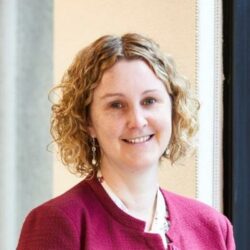
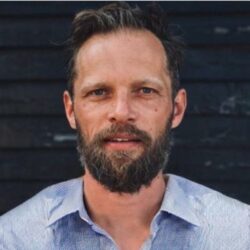

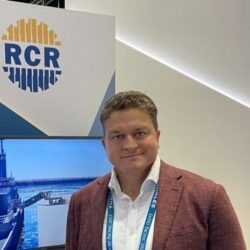
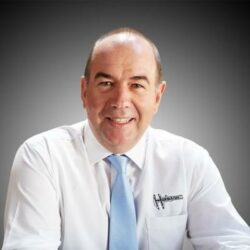



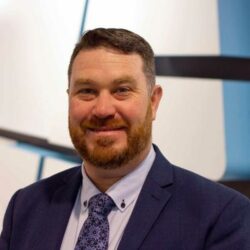


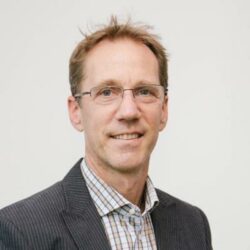

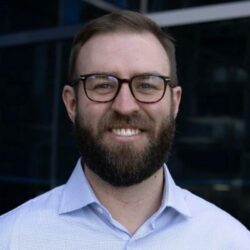

![20154Natural Hydrogen – A Great White Hope? [Curated by Society of Petroleum Engineers] Avon Mcintyre](https://aogexpo.com.au/wp-content/uploads/2024/02/74b40920fe2f479691cd8f3c3eaae875-250x250.jpeg)
![20038Natural Hydrogen – A Great White Hope? [Curated by Society of Petroleum Engineers] Ema Frery](https://aogexpo.com.au/wp-content/uploads/2024/01/df35edede45142b5b42e1d72a47be701-250x250.jpeg)
![19824Natural Hydrogen – A Great White Hope? [Curated by Society of Petroleum Engineers] Linda Stalker](https://aogexpo.com.au/wp-content/uploads/2024/01/9516a7ca1abf4157ba33b32f1687e8b6-250x250.jpeg)
![20128Natural Hydrogen – A Great White Hope? [Curated by Society of Petroleum Engineers] Peter Haines](https://aogexpo.com.au/wp-content/uploads/2024/02/d8de7aaa4e944e38ad759e3b62f59825-250x250.jpeg)
![20260Offshore Oil and Gas Infrastructure Reuse for CCS: Opportunities and Challenges [Curated by Society of Petroleum Engineers] Jeff Zhang](https://aogexpo.com.au/wp-content/uploads/2024/03/f3c5ffb866214c57af7513332f7e7404-250x250.jpg)
![19844Offshore Oil and Gas Infrastructure Reuse for CCS: Opportunities and Challenges [Curated by Society of Petroleum Engineers] Stephen Stokes](https://aogexpo.com.au/wp-content/uploads/2024/01/87ebeb6985324ce6978ec91d8dbc8437-250x250.jpeg)
![19850Offshore Oil and Gas Infrastructure Reuse for CCS: Opportunities and Challenges [Curated by Society of Petroleum Engineers] Tom Barratt](https://aogexpo.com.au/wp-content/uploads/2024/01/4fa1f7d9ea224e7e8c3e814fbab25060-250x250.jpeg)
![19836AI Drives Transformation of Oil and Gas Industry [Curated by Society of Petroleum Engineers] Andrew Octaviano](https://aogexpo.com.au/wp-content/uploads/2024/01/cc8cb2a113ff4b1f98e85cc8c7d4d545-250x250.jpeg)
![20175AI Drives Transformation of Oil and Gas Industry [Curated by Society of Petroleum Engineers] David Cook](https://aogexpo.com.au/wp-content/uploads/2024/02/d4f1f8004b53416a92542aa6d4dea5af-250x250.jpeg)
![19832AI Drives Transformation of Oil and Gas Industry [Curated by Society of Petroleum Engineers] Hossein Karami](https://aogexpo.com.au/wp-content/uploads/2024/01/3e97790c948b4db7978f6c1fe851cf32-250x250.jpeg)
![19834AI Drives Transformation of Oil and Gas Industry [Curated by Society of Petroleum Engineers] Jonathan Khneiger](https://aogexpo.com.au/wp-content/uploads/2024/01/320531bb330d43048b88e578d079a8b5-250x250.jpeg)
![19838AI Drives Transformation of Oil and Gas Industry [Curated by Society of Petroleum Engineers] Steven Smart](https://aogexpo.com.au/wp-content/uploads/2024/01/fdb36941f68242f089245a1ebde3cdb6.jpeg)
![20169‘Bridging the Knowledge Gap’ in Energy [Curated by Society of Petroleum Engineers] Annie Tan](https://aogexpo.com.au/wp-content/uploads/2024/02/da37a9a8f1af471695408466a622c052-250x250.jpeg)
![20075‘Bridging the Knowledge Gap’ in Energy [Curated by Society of Petroleum Engineers] Demi Migliore](https://aogexpo.com.au/wp-content/uploads/2024/02/435e02e629ae408faff6ce74cd44f1e1-250x250.jpeg)
![20048‘Bridging the Knowledge Gap’ in Energy [Curated by Society of Petroleum Engineers] Bill Townsend](https://aogexpo.com.au/wp-content/uploads/2024/01/dc042f077f3d4d4bb9ff2f27f60157fd-250x250.jpeg)
![20046‘Bridging the Knowledge Gap’ in Energy [Curated by Society of Petroleum Engineers] Chris Elders](https://aogexpo.com.au/wp-content/uploads/2024/01/40d6ab60d37344a197353734c1ef0382-250x250.jpeg)
![20044‘Bridging the Knowledge Gap’ in Energy [Curated by Society of Petroleum Engineers] Kai Thompson](https://aogexpo.com.au/wp-content/uploads/2024/01/42c51880f20140b58d7dd3649c4e1a9d-250x250.jpeg)
![19828‘Bridging the Knowledge Gap’ in Energy [Curated by Society of Petroleum Engineers] Orla McSharry](https://aogexpo.com.au/wp-content/uploads/2024/01/9d7b41c39cde494cbe78b530289e7dbc-250x250.jpeg)



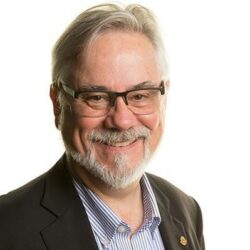

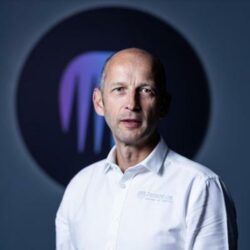
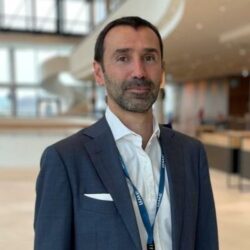



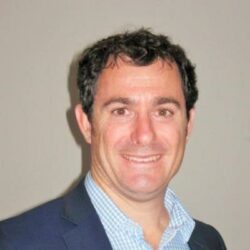




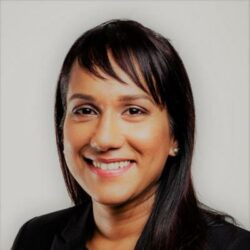

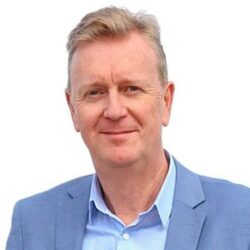


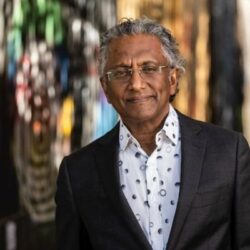
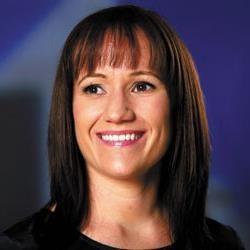
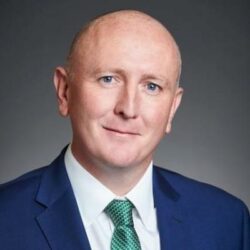


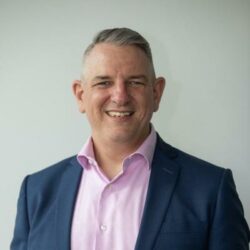

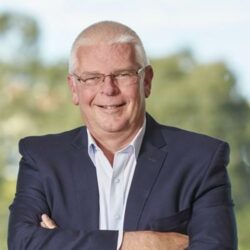
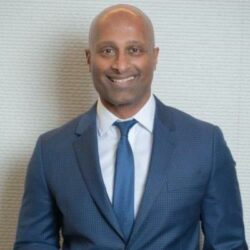
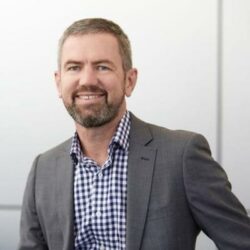
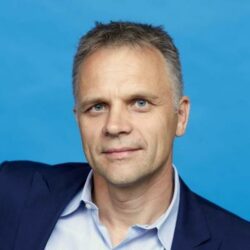



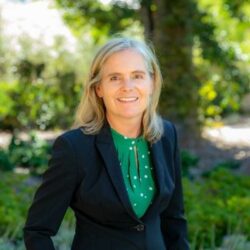
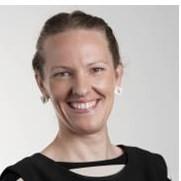




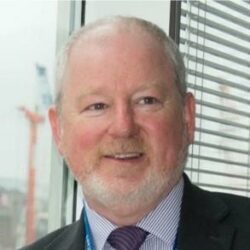



![19846Green Shipping [Curated by Royal Institution of Naval Architects] Jim Black](https://aogexpo.com.au/wp-content/uploads/2024/01/d5d7269180654720b2506f108363d9d9-250x250.jpeg)
![19816Green Shipping [Curated by Royal Institution of Naval Architects] Daniswara Krisna Prabatha](https://aogexpo.com.au/wp-content/uploads/2024/01/3d5260cd6baf4680a3edb8430537f40c.jpeg)
![19800Green Shipping [Curated by Royal Institution of Naval Architects] Nguyen Cao](https://aogexpo.com.au/wp-content/uploads/2024/01/5bb4573d2bef468b9b0bd063010077f9-250x250.jpeg)
![19796Autonomous Systems [Curated by Royal Institution of Naval Architects] Charles Collins](https://aogexpo.com.au/wp-content/uploads/2024/01/b429be211b6e4290b64d1c7684167557-250x250.jpeg)
![20430Autonomous Systems [Curated by Royal Institution of Naval Architects] Giovanni Massari](https://aogexpo.com.au/wp-content/uploads/2024/03/90b82571095e4b15bb456f3a60fda6bc-250x250.jpeg)
![19856Autonomous Systems [Curated by Royal Institution of Naval Architects] Mark Roberts](https://aogexpo.com.au/wp-content/uploads/2024/01/efbfbb9e086c4941b1eee6dcc649bf9e-250x250.jpeg)
![20448Autonomous Systems [Curated by Royal Institution of Naval Architects] Peter Roberts](https://aogexpo.com.au/wp-content/uploads/2024/03/2feb74b44beb4ab89090b84184c6095a-250x250.jpeg)
![19842Offshore Operations [Curated by Royal Institution of Naval Architects] Tim Gourlay](https://aogexpo.com.au/wp-content/uploads/2024/01/fd92897af3674beea01a15877b88ec42-250x250.jpeg)
![19822Offshore Operations [Curated by Royal Institution of Naval Architects] Jinzhu Xia](https://aogexpo.com.au/wp-content/uploads/2024/01/f357570bd73d4c3885aa37e55c5cc98a-250x250.jpeg)
![19820Offshore Operations [Curated by Royal Institution of Naval Architects] Dimas Priyambodo](https://aogexpo.com.au/wp-content/uploads/2024/01/dc02617b656a4e7db825aa1bb7840895-250x250.jpeg)
![19818Offshore Operations [Curated by Royal Institution of Naval Architects] Dene Halkyard](https://aogexpo.com.au/wp-content/uploads/2024/01/6c69efe34735486ebed63fd2ca28d609-250x250.jpeg)
![19804Offshore Operations [Curated by Royal Institution of Naval Architects] Bassey Bassey](https://aogexpo.com.au/wp-content/uploads/2024/02/ae64a5509fac4a918293555c02f9ea95-250x250.jpg)







